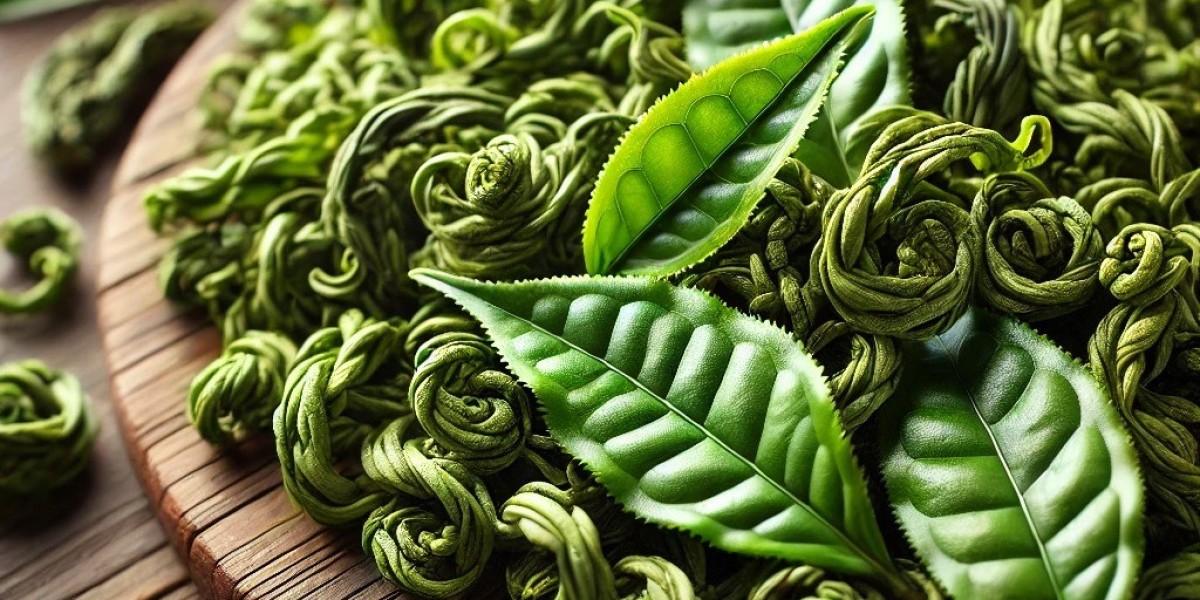Taiwan, with its rich tea culture and optimal growing conditions, produces some of the most exceptional teas in the world. Among them, Alishan Oolong and Oriental Beauty stand out for their distinct characteristics and flavors. This article delves into the nuances of these two celebrated teas, exploring their origins, processing methods, flavor profiles, and the unique aspects that make each one special.
Origins and Terroir
Alishan Oolong Tea comes from the Alishan region, one of Taiwan’s most famous high mountain areas known for its cool, misty climate and high elevation. This environment is ideal for growing tea, as the high altitude slows the growth of the tea bushes and results in a denser leaf with more concentrated flavors.
Oriental Beauty Tea, also known as Dongfang Meiren, originates from lower elevations in Taiwan. This tea is primarily produced in Hsinchu County, where the climate is warmer and more humid. A unique aspect of Oriental Beauty is that it is made from leaves bitten by the tea green leafhopper, an insect whose feeding initiates the oxidation of the leaves and enhances the tea's sweet and fruity flavors.
Cultivation and Processing
Alishan Oolong is typically harvested in the spring and undergoes a meticulous process that includes withering, rolling, partial oxidation, and firing. The tea is carefully monitored to ensure a light oxidation level, which preserves the natural floral notes and fresh green qualities of the leaves.
Oriental Beauty requires a different approach. It is harvested in the summer when the leafhoppers are most active. The tea is highly oxidized—much more so than most oolongs—and does not undergo roasting. This unique processing contributes to its distinctive flavor profile, marked by a natural sweetness and complex aromatic notes.
Flavor Profiles
The flavor of Alishan Oolong is renowned for its clarity and depth. It typically features floral and creamy notes, with a fresh, bright aroma reminiscent of orchids and a smooth, buttery finish. The high altitude and cooler temperatures of the Alishan region impart a crispness that is refreshing and soothing.
In contrast, Oriental Beauty boasts a rich bouquet of aromas and flavors that include ripe fruits, honey, and spices. The tea's oxidation and the natural damage from leafhoppers create a unique sweetness and a complex, woody and musky character. Its flavor is often described as having a hint of peach, rose, and toasted nuts, making it a standout in the world of oolong teas.
Brewing Techniques
Both teas benefit from being brewed with precision. Alishan Oolong is best brewed at temperatures around 85-90°C, allowing its delicate flavors to unfold without bitterness. A gaiwan or a high-quality clay teapot is ideal for multiple short infusions, each revealing a new layer of taste.
Oriental Beauty, due to its higher oxidation level, can be brewed at slightly higher temperatures, around 90-95°C. This tea is also suited to multiple infusions, with later steepings often bringing out deeper sweetness and more complex flavor notes.
Cultural Significance and Consumption
Alishan Oolong is often enjoyed in Taiwan and abroad for its soothing, almost therapeutic qualities. It is a popular choice for tea enthusiasts looking to enjoy a quiet, reflective cup of tea that calms the mind and refreshes the body.
Oriental Beauty has a dramatic origin story that adds to its allure. It was reportedly named by Queen Elizabeth II as "Oriental Beauty" after she was captivated by its exceptional flavor. This tea is often enjoyed during special occasions and is highly valued as a gift due to its unique flavor and royal connection.
Conclusion
Alishan Oolong and Oriental Beauty are both superb examples of Taiwanese tea craftsmanship, each reflecting the unique environmental and cultural elements of Taiwan. While Alishan Oolong offers a more traditional oolong experience with its floral and fresh qualities, Oriental Beauty provides a bolder, fruitier taste profile. Both teas provide a delightful insight into the diversity and richness of Taiwanese teas, making them cherished by tea lovers around the world.


